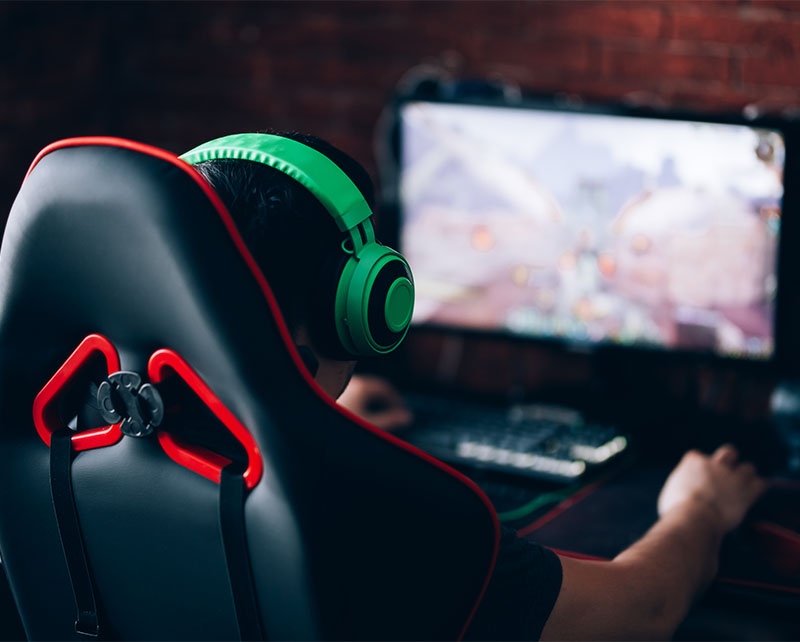While in-game microtransactions are still incredibly popular today, that's likely to change with the development of non-fungible tokens (NFTs). In the following article, we'll look at:
- The potential for NFTs to effectively replace a large portion of the traditional in-game microtransaction infrastructure
- Advantages and disadvantages of using NFTs for this purpose
- The interoperability of NFTs between games
- What this type of future will look like
NFTs for In-Game Microtransactions
To better understand why NFTs are a viable replacement for many traditional in-game microtransactions, you need to know what microtransactions entail.
What are in-game microtransactions?
Fortnite, Roblox and other metaverse-type games encourage users to purchase additional, optional upgrades to characters and experiences. This is how the game developers make money from them.
These purchases are normally small. But they can range anywhere from $0.10 for basic skins or other items to $50 for season passes, collections of downloadable content (DLC) or other upgrades.
Typically, these purchases are for virtual items like decorations or furniture for virtual spaces, along with clothing for avatars.
The fact is that microtransactions are a massive business.
They serve as the primary income source for games like Fortnite and Roblox. These two games alone take in billions of dollars worth of microtransactions every year.
When completing microtransactions, players first purchase in-game currencies using real money. They then use this in-game currency to buy certain items from stores within the game.
When making a purchase, a portion of the money goes toward a transaction fee; the rest goes to the creator of the content purchased. Items that the player bought then become part of the player's personal in-game inventory.
How NFTs can handle in-game microtransactions
Both NFTs and cryptocurrencies can replace the bulk of the infrastructure needed to facilitate in-game microtransactions. For instance, one could do the following using these replacements:
- Operate with their personal crypto-wallet as their inventory
- Use cryptocurrency in lieu of in-game currency
- Use NFTs to represent purchased items
Ultimately, this offers a very simple solution.

Benefits of Using NFTs
There are multiple benefits that both developers and gamers can experience by using NFTs for in-game microtransactions. These advantages include:

Simpler infrastructure
Through the use of an existing NFT and cryptocurrency framework, developers don't need to work as hard to support in-game microtransactions and purchases.
Instead of relying on an entire infrastructure to handle virtual currency accounting, inventories and purchases, individuals only need a crypto wallet ID for each player. Developers will then be able to use that ID to validate the player's current inventory.
NFTs and cryptocurrencies allow for a simpler infrastructure. But games should still offer in-game markets where players can purchase newly minted NFTs in exchange for games receiving a revenue share of these purchases.
New market entrants can offer these in-game white-labeled NFT marketplaces as services.
Transferable inventory
Due to the fact that buyer identity is no longer confined to an in-game identity, players can fully transfer their virtual inventories outside of their respective games. Crypto wallets use open standards, which means that the identity owns the items the player purchases. As a result, any other game that the player enters can gain insight into the user's inventory and determine what they already own.
Khronos Groups's glTF and 3D eCommerce standards committees, among others, have developed emerging standards in this space for the 3D representation, wearability and behavior of these virtual items. This will allow for increased transferability between rich experiences.


Lower start-up costs
The combination of a simpler infrastructure and transferable inventory makes it easier to populate newly developed games with pre-existing NFTs that gamers have purchased from other sources. In turn, future metaverse games will likely be easier to launch and form rich experiences with minimal investments in inventory and resources.
Players simply need to transfer existing data.
Vibrant secondary markets
At this time, many in-game microtransactions are tradeable either via in-game marketplaces or outside of the game through eBay or other third-party tools.
However, these marketplaces are often poorly implemented. They offer minimal transparency and illiquidity.
If NFTs replace the majority of in-game virtual objects, this will allow for the existence of rich and open secondary markets.

Downsides to NFTs
Currently, there are certain disadvantages to using NFTs, including:
Transaction costs
Many of the cryptocurrencies used for NFTs come with high transaction costs at this time. These costs pertain to the creation of new NFTs along with transactions involving them.
Ethereum is the most popular cryptocurrency for purchasing and selling NFTs. But minting and transferring a single virtual item costs more than $100.
This is why NFTs simply aren't a viable solution for microtransactions quite yet.
On the other hand, there is some light at the end of the tunnel from alternative cryptocurrencies and proposals for improving Ethereum. Most of these solutions involve replacing proof-of-work (PoW) consensus algorithms with proof-of-stake (PoS), with the latter cutting transaction costs by as much as 99% in most cases.
For example, Tezos, an emerging PoS cryptocurrency, comes with minting costs of $0.30 and transfer costs of $0.05 (USD). These costs are in line with what's required for a viable microtransaction replacement system.
Environmental impact of cryptocurrency
Today's legacy cryptocurrencies also have a significant environmental impact, particularly those relying on PoW algorithms. This dependence is also why transaction costs seen with these cryptocurrencies are so high.
Both of these main issues will eventually resolve themselves as cryptocurrencies make the transition to more efficient consensus and transaction models relying on PoS and other PoW alternatives.
Future Scenarios
NFTs can serve as the foundation for interoperable and persistent experiences instead of the current walled-garden model of in-game microtransactions. Because of this, NFTs are likely to become a growing trend in the industry as effective replacements for microtransactions.
Based on this, we can predict a few potential scenarios that might come into play in the future of gaming, such as:
New entrants leveraging NFTs
As mentioned, NFTs for in-game microtransactions are incredibly useful for new market entrants. This is likely where uptake will first occur.
Many emerging games that use this infrastructure to facilitate interoperability may create a new community of games around them that expect the transferability of in-game purchases. Subsequently, this may generate sufficient momentum that brings this technology into the mainstream.
Opposition by incumbent
Although there are benefits, many of these are primarily received by new entrances into the metaverse space, as opposed to existing players with large investments in their existing walled gardens.
As such, it's likely that these players, especially those on Fortnite and Roblox, could actively work against interoperable NFT virtual items. Their existing solutions ensure that their current purchases are trapped within their respective ecosystems, preventing true interoperability.
Platforms leveraging NFT interoperability
Some platforms like Oculus perceive the development of an open NFT market on their platform as a competitive advantage. The owners of these platforms could make an SDK available to enable NFT purchases, inventory and transfers in a standardized fashion.
This would help simplify the pathway to games adopting NFTs. Based on their behavioral history, it's conceivable that platform owners may actually ensure that games adopt NFTs for in-game microtransactions for interoperable virtual objects.
This would, in turn, force games to opt into the NFT ecosystem on the platform, giving owners a competitive advantage through network effects between games.
Avatar customizations
Avatar customizations are likely to be a big focus of NFTs in the coming years.
These will involve purchasing mass-market branded clothing, such as clothing from brands like Nike, Adidas, Under Armour and Gucci, along with limited editions from Supreme and independent designers. These purchases will end up in crypto-wallets as NFT inventory.
Players can then have avatars wear the items across various games that support this customization.
Embrace an Interoperable Future with NFTs
All of the potential benefits of replacing in-game microtransactions with NFTs make this transition a likely inevitability. If game developers want to succeed with a superior game experience while maintaining profitability, they should consider implementing NFTs as they develop and become increasingly versatile and interoperable.



